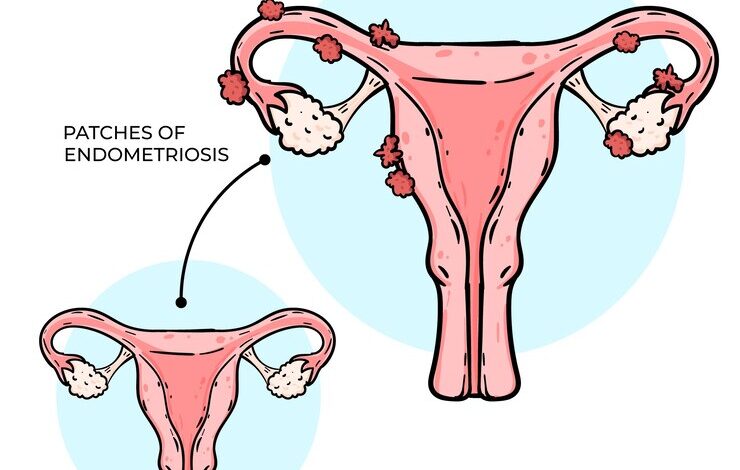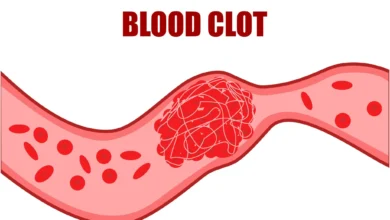Understanding Endometriosis: What You Need to Know

Endometriosis is a chronic condition that affects millions of women worldwide. Despite its prevalence, it remains widely misunderstood. In this post, we’ll explore what endometriosis is, its symptoms, how it’s diagnosed, and the various treatment options available. By shedding light on this often painful condition, we hope to provide clarity and support to those who may be affected.
What is Endometriosis?
Endometriosis occurs when tissue similar to the uterine lining, known as endometrium, grows outside the uterus. This tissue can appear on the ovaries, fallopian tubes, and other pelvic organs. Every month, this tissue reacts to hormonal changes much like the lining inside the uterus. It thickens, breaks down, and bleeds, but because it’s outside the uterus, the blood can’t exit the body. This trapped blood can lead to inflammation, pain, and the formation of scar tissue. For those seeking treatment options, a specialized Fertility Center in Bihar can provide valuable support and care.
Common Symptoms of Endometriosis
One of the most challenging aspects of endometriosis is its diverse range of symptoms. These can vary from woman to woman and may include:
- Pelvic Pain: Often the most common symptom, pelvic pain typically worsens during menstruation. It can also occur during other times of the month.
- Heavy Menstrual Bleeding: Many women with endometriosis experience heavy periods or bleeding between periods.
- Painful Intercourse: Pain during or after sex is a frequent complaint among those with endometriosis.
- Digestive Issues: Symptoms such as diarrhea, constipation, and bloating can occur, particularly during menstruation.
- Infertility: Endometriosis can affect fertility, making it difficult for some women to conceive. It’s important to note that the severity of the symptoms does not always correlate with the extent of the disease. Some women with severe endometriosis may have mild symptoms, while others with a milder form of the disease may experience severe pain.
Diagnosing Endometriosis
Diagnosing endometriosis can be challenging due to its symptoms overlapping with other conditions, such as irritable bowel syndrome (IBS) or pelvic inflammatory disease (PID). A thorough evaluation typically includes:
- Medical History: Your doctor will discuss your symptoms, menstrual history, and any other relevant health issues.
- Pelvic Exam: During a pelvic exam, your doctor may feel for abnormalities, though endometriosis can be difficult to detect this way.
- Imaging Tests: Ultrasounds or MRIs may be used to look for endometriosis lesions, but these tests can sometimes miss the disease.
- Laparoscopy: The most definitive way to diagnose endometriosis is through laparoscopic surgery, where a tiny camera is inserted into the pelvis through a small incision. This allows the doctor to see and possibly remove endometriosis tissue.
Treatment Options for Endometriosis
While there is currently no cure for endometriosis, there are several treatment options that can help manage symptoms and improve quality of life. Treatment plans are often personalized and may include:
- Pain Management: Over-the-counter pain relievers like ibuprofen or acetaminophen can help alleviate pain. For more severe pain, your doctor may prescribe stronger medications.
- Hormone Therapy: Hormonal treatments can help reduce or eliminate menstruation, which can slow the growth of endometriosis tissue. Options include birth control pills, hormone patches, and progestin therapy.
- Surgical Options: In cases where other treatments are ineffective, surgery may be recommended to remove as much endometriosis tissue as possible. This can help reduce pain and improve fertility.
- Lifestyle Changes: Incorporating dietary changes, regular exercise, and stress management techniques may help some women manage their symptoms.
Supporting Your Health and Well-Being
Dealing with endometriosis can be incredibly tough, both emotionally and physically. It’s important to take care of yourself and seek help when needed. Joining support groups or online communities can provide comfort and advice from others who understand exactly what you’re experiencing.
Take care of your health, too. Don’t be afraid to talk about how you’re feeling. Keep track of your symptoms, be honest with your doctor, and try different treatments to find what’s right for you
Consulting with Specialists
If you suspect you have endometriosis or are struggling to manage your symptoms, seeking help from a specialist can be beneficial. Dr. Rasmi Prasad, a renowned IVF specialist at Diwya Vatsalyamamta Hospital in Patna, is highly experienced in diagnosing and treating endometriosis. Her expertise makes her one of the best gynecologist doctors in Patna, offering personalized care and treatment options to help manage your condition effectively.
Conclusion
Endometriosis is a complex and often painful condition, but with the right approach and support, you can find relief and improve your quality of life. Understanding the symptoms, seeking accurate diagnosis, and exploring treatment options are crucial steps in managing this condition. Remember, you don’t have to navigate this journey alone—expert help and support are available to guide you toward better health and well-being.




